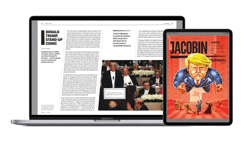The phrase ‘multi-packing’ is often met with groans, resigned sighs and furtive eye rolls to fellow colleagues, as it evokes memories of hours spent poring over ABC certificates, looking back at past issue data and analysing figures in an attempt to glean that key nugget of information that will shed light on a sector and a title’s performance. And, of course, information to be used in the all-important rate negotiations.
Multi-packing has been a topic at the forefront of press buyers’ lives for the last few years. When you actually start a conversation about it, it becomes clear that it’s an area rich for debate. There are certainly still questions around its value and worth, but in today’s multi-media world, is the debate still relevant or even important?
Boost for new! and Star
Multi-packing first hit the headlines back in February 2010 when new! and Star’s circulations shot up by a phenomenal 35% and 84% respectively year-on-year in the Jul-Dec 09 ABCs. Press buyers across town quickly wanted to know why and how, and it quickly became clear that this was down to multi-packing. Then ensued a debate about whether or not the increased circulation gains were of real value or not. The questions came thick and fast; does multi-packing offer true added value or simply carry a weaker title in a publisher’s portfolio? Is it a good thing for both consumers and advertisers alike? Is it a valid sampling exercise which therefore leads to growth and sustained performance? And, from a trading perspective, what is its worth? It is probably only now, almost three years later, that we can see the answers to some of these questions.
For the last few years, multi-packing has been analysed very closely, since as media buyers, we are ultimately looking for fair value. Believe it or not, we aren’t all about driving down prices! We want to buy a lucrative and valuable audience; readers who are actively engaged with the product in their hands, actively having chosen to buy and read it. And this is the crux of the multi-packing debate. If a consumer buys OK!, but happens to get new! and Star as well as part of a value bundle, how do we know if these readers really want new! and Star and have actively engaged with that content, and ultimately therefore our advertising? We don’t. And whilst new! and Star may celebrate off the back of the increased sales achieved, these may not actually be valid sales, as people still only wanted OK! in the first place.
Sometimes, titles which have no synergy are multi-packed together simply because they are within the publisher’s portfolio, or indeed could do with a circulation boost. It is a real stretch to see the worth and relevance of packing Look and Soaplife together for example. If our focus is to deliver an audience, these two titles have very different demographics. Soaplife is 49% C1C2 and only 33% ABC1, and yet Look is 54% ABC1 (NRS Jul 11 – Jun 12). Therefore, the reader that picks up both of these magazines in a multi-pack is, I would imagine, unlikely to be interested in both titles in equal measure or even in one of them at all. Meanwhile, advertisers are unlikely to have a campaign so broad to reach both of these separate demographic targets.
The up-side
There is, of course, the flip-side of this argument whereby multi-packing can be viewed very positively. Particularly from a publishing and marketing perspective, multi-packing offers the opportunity to sample their titles, getting them into the hands of infrequent or non-readers through the vehicle of another magazine. And this, of course, is perfectly valid. In most cases, titles are bundled with those of a similar ilk, and therefore, it is quite possible that the purchaser might enjoy trialing another similar title in the sector and think about buying it next time around. From the consumer’s perspective too, it can also be a positive experience when they are offered great value in purchasing their favourite magazine; they also get one or two more to try and enjoy, perhaps to share with friends. At the cluttered and competitive newsstand, anything which can sway the shopper towards buying your title over its competitor is surely worth it, and the ‘added value’ offered by a multi-pack is certainly one way.
No long term gains
However, what we are beginning to see now is that this tactic doesn’t actually seem to work long term. Whilst multi-packing initially proved to deliver short term circulation boosts, it hasn’t led to long term gains.
Later on into 2010, multi-packing was still at its peak in the celebrity sector in particular, frustrating agency buyers for the reasons explained above, as well as provoking increased rivalry between publishers. Yet again we saw rises from new! and Star, whilst IPC for example, who did not bag as many issues, consequently did not see the same short-term gains. However, the questions concerning sustainability were beginning to come to the fore, with the multi-packing of OK! with its sister titles new! and Star. Whilst the practice did boost new!'s performance, we saw OK!'s circulation fall more than 20 per cent year-on-year.
This trend continued throughout 2011 and into 2012 as the gains made in the initial heyday of multi-packing could not be sustained. In the last August 2012 ABCs, women’s weekly magazines struggled. The traditional weeklies decreased by -6.2% year-on-year, losing copy sales at both the classic (-4.6%) and real life (-7.4%) ends of the market, and in this sector, no titles posted year-on-year increases. new! and Star, who were the original winners in the multi-packing arena, saw declines of 15% and 29% year-on-year. Across all sectors of weekly magazines, we saw heavy multi-packing, but these results show yet again that this form of trial does not appear to be a very successful route for publishers.
Shift in publisher attitudes
Publishers should be encouraged to discard multi-packing, as not only is its value questionable, but it no longer appears to be a viable method of growth. For all magazine publishing houses, the priority needs to shift, as we are indeed starting to see. This cannot happen overnight within a market so used to relying on this method to maintain their titles’ positions, but already we are seeing that magazines are investing in other media platforms, and investing in the products and brands themselves rather than on newsstand strategy. As Paul Keenan, chief executive for Bauer Media, told MediaWeek: "Magazine publishing is about leading on product over price now. Cover mounts, multi-packing and aggressive price strategies are tactics that won't work for the future of our sector. You need a content strategy and a print plan that goes beyond the printed page. The use of other platforms is vital for building deeper relationships with both readers and advertisers.” I couldn’t agree more.
The way in which we work with our clients now is no longer about separate print, TV, and digital budgets, but about the challenge of reaching an audience and answering a business objective. We need media owners to work with us to deliver this, and that can only happen if brands can act as such, and show us how they can reach an audience, regardless of platform. It is no longer simply about buying space in a print title which has the highest circulation to reach the most numbers, but about accessing a relevant brand in an engaging way, to deliver an audience regardless of platform.
We will, of course, continue to analyse title and sector performances when the ABCs come out every six months, and looking into multi-packing has become a standard part of this analysis and commentary. Yet it is certainly no longer the focus of our research or at the heart of titles’ successes versus failures. Instead, the focus has shifted yet again for publishers. It’s now about focusing on titles as brands, looking beyond the printed product, certainly if they want to stay ahead and future-proof their businesses.
Now it is about content, whether that is delivered via digital editions, tablet innovation, Facebook or Twitter. The challenge that is facing publishers is formatting the content to take advantage of the various platform capabilities. Different publishers are approaching this differently. The Daily Mail, for instance, delivers a different tone and focus online, than it does in paper, as it capitalises on the younger demographic dominating the online arena. News International conversely is platform agnostic and deliver the same content regardless of platform. It will be interesting to see which strategy works best.
This is what we as media planners or buyers now need to start to analyse and understand. Dare I say, in the next few years, we will have the answers and the conversations about platforms will be accompanied by the same furtive eye rolls and sighs once reserved for multi-packing! So, the true value of publishers’ platforms and content is quite possibly the next big debate we are facing.












